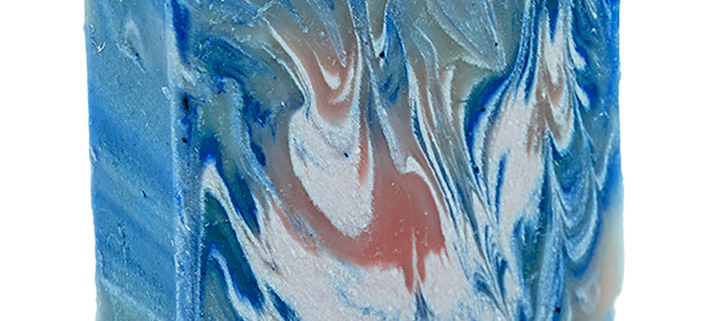Soap is something we use every day without much thought, but have you ever wondered about the science behind it? How do soap bubbles form, and what role do they play in cleaning our skin and surfaces? This article delves into the science of lathering and explores how soap effectively traps and removes grime, dirt, and oil through a fascinating process involving surfactants.
What is Lathering?
Lathering refers to the formation of bubbles when soap mixes with water and is agitated, either by rubbing it between your hands, using a sponge, or scrubbing a surface. These bubbles are not just a cosmetic feature that we associate with cleanliness; they play a vital role in the process of cleaning.
When soap comes into contact with water, it reduces the surface tension of the water, enabling it to spread more easily over surfaces and penetrate deeper into grime. As the soap lathers, it forms bubbles that act as microscopic traps, encapsulating oils, dirt, and other contaminants, making them easier to rinse away. Understanding the science of lathering is crucial for grasping how soap works to remove unwanted substances from our skin, clothes, or dishes.
The Role of Surfactants in Soap
At the heart of soap’s cleaning power is the presence of surfactants, chemical compounds that reduce the surface tension of water and enable soap to mix with both water and oil. Surfactants are the reason why soap can clean greasy pans, oily skin, and other surfaces that water alone cannot handle.
How Surfactants Work
Surfactants are amphiphilic molecules, meaning they have two distinct parts: a hydrophilic (water-loving) head and a hydrophobic (water-repelling) tail. The hydrophobic tail is attracted to oils and greases, while the hydrophilic head is attracted to water. When soap is applied to a surface covered in dirt or oil, the hydrophobic tails of the surfactants attach to the oils, while the hydrophilic heads remain in the water.
As more soap is added and agitated, these surfactant molecules surround the oils, forming structures known as micelles. The oils are trapped within the center of the micelles, and because the outer surface of the micelle is hydrophilic, the entire structure can be easily washed away with water. This is how soap works to trap grime and lift it off the surface being cleaned.
The Formation of Soap Bubbles
The process of lathering produces soap bubbles, which are essentially thin films of water and soap molecules trapping air inside. These bubbles are formed because the soap molecules arrange themselves in such a way that they create a barrier around the air pockets. The hydrophilic heads of the surfactants face outward, allowing the bubble to be stable in the water, while the hydrophobic tails point inward, preventing the air from escaping.
While bubbles themselves do not directly clean surfaces, their formation is a sign that soap is working to reduce surface tension and that surfactants are actively trapping dirt and oils. More lather doesn’t always mean more cleaning power, but it does indicate that the soap is effectively interacting with the water and creating the right conditions for grime removal.
How Soap Removes Grime: The Science Behind the Clean
Now that we understand how surfactants work, let’s explore the step-by-step process of how soap actually removes grime.
Step 1: Reducing Surface Tension
Water naturally has high surface tension, which means it tends to stick to itself rather than spreading across surfaces. When you apply soap, the surfactants reduce this surface tension, allowing the water to spread out more easily and reach areas where dirt and oil may be hiding. This is particularly important when trying to clean oily surfaces, as oils repel water but are attracted to the hydrophobic ends of surfactants.
Step 2: Breaking Down Oils and Grime
Once the soap is applied to a dirty surface, the hydrophobic tails of the surfactants bond with the oils and grime. The soap molecules surround the particles of dirt and oil, breaking them down and forming micelles, which encapsulate the grime. This encapsulation prevents the oils from sticking back to the surface you are trying to clean.
Step 3: Trapping the Dirt in Micelles
With the grime safely trapped inside the micelles, the hydrophilic heads of the surfactants allow the entire micelle to dissolve in water. This is crucial for removing the dirt from the surface, as it ensures that the oils and grime are suspended in the water rather than being left behind.
Step 4: Rinsing Away the Grime
The final step in the cleaning process involves rinsing away the micelles, along with the trapped dirt and oils. Because the outer surface of the micelles is hydrophilic, they are easily washed away by water, leaving behind a clean surface. This is why it’s important to rinse thoroughly after using soap, whether on your hands, dishes, or other surfaces, to ensure all the dirt is removed.
The Role of Water in Lathering
Water is an essential component in the science of lathering and grime removal. Without water, soap cannot lather effectively or form micelles. The amount of water used also influences how much lather is created and how well the soap works to remove grime.
Interestingly, the type of water used can affect soap’s ability to lather. Hard water, which contains high levels of calcium and magnesium ions, can reduce soap’s effectiveness by forming insoluble compounds with soap molecules. These compounds do not lather well and may leave behind a residue, known as soap scum. On the other hand, soft water allows soap to lather more easily and work more efficiently to remove grime.
Soap and Different Types of Grime
Not all grime is created equal, and the type of dirt you are trying to remove can affect how soap works. Soap is especially effective at removing organic grime, such as oils, fats, and grease, due to the interaction between surfactants and oils. However, for inorganic grime like mineral deposits or rust, soap may not be as effective, and specialized cleaners are often required.
Additionally, soap is excellent for cleaning skin, as it not only removes oils and dirt but also helps wash away bacteria and other pathogens. This is why handwashing with soap is one of the most effective ways to prevent the spread of illness and maintain good hygiene.
The Environmental Impact of Surfactants in Soap
While soap and surfactants play a crucial role in cleaning, it’s also important to consider their environmental impact. Some surfactants, particularly those found in synthetic detergents, can be harmful to aquatic ecosystems if they are not biodegradable. When these surfactants enter water bodies through wastewater, they can disrupt the surface tension of the water, affecting aquatic life.
Fortunately, many modern soaps are made with biodegradable surfactants that break down more easily in the environment. Choosing eco-friendly soaps and detergents can help reduce the environmental impact of these essential cleaning agents while still providing effective cleaning power.
Conclusion
The science of lathering is a fascinating process that goes beyond the simple act of creating bubbles. At its core, soap relies on the power of surfactants to reduce surface tension, trap grime, and allow it to be washed away with water. Understanding how soap works not only enhances our appreciation for this everyday product but also highlights its importance in maintaining cleanliness and hygiene.
Whether you’re washing your hands, scrubbing dishes, or cleaning surfaces, the role of surfactants in soap is essential for effectively removing grime and ensuring a thorough clean.
Need Spa Products in El Cajon, CA?
Soaps & Scents has been making beautiful handmade soaps for over 20 years. We have bar and liquid soaps in a variety of fragrances and even some fun soaps such as our Ducky or Cupcake soaps. We make everything by hand in small quantities, and all of our products are free of animal products. We also use the highest percentage of essential oil and fragrance oil that you can use, so the products will maintain their wonderful scent even years later. In addition to our soaps, we also offer bath bombs, body lotions, room sprays, and more! If you haven’t had a chance to try our wonderful soaps and products, you’re in for a treat. Contact us today to learn more about your first Soaps & Scents bar. We are available on Saturdays by appointment!






